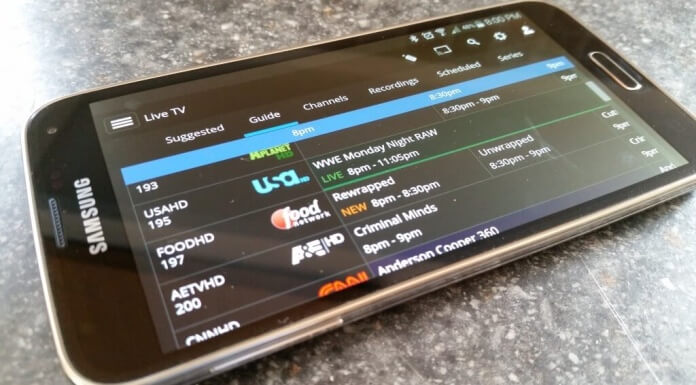Most people consider a TV tuner an optional feature of the HTPC; However If you plan to watch live TV on your HTPC, then you’ll need a TV tuner. For the US market there’s only two ways to set it up – CableCard or Over-the-Air(Local Broadcast with antenna)
Whats a CableCard?
A CableCard is a device that is about the size of a credit card and given to you by your cable provider, it’s how the cable company links up your account to the feed coming in; think of it as a key. If you already have a cable box provided by your cable company, there’s a good chance one’s inside and you just don’t know it. To get a CableCard, contact your cable provider and either for free or a small fee one will be provided. CableCard TV tuners act just like a cable set-top box, they’ll offer the ability to record and/or watch up to 3 or more channels at once; most DVR boxes provided by the cable companies these days only allow 2 or 3 channels to be recorded/watched at once. In some cases cable providers have locked down certain content which could prevent the CableCard tuner from streaming it; this is somewhat rare, and most commonly experienced with premium content such as Pay-Per-View, HBO, Showtime, etc.
There’s only a few notable companies these days producing these types of TV tuners – Ceton, Hauppauge and SiliconDust. When it comes to which brand to go with you’ll need to look at what platform your system will be setup.
What’s Over-the-Air?
If interested in cutting the cord, you’ll want to look for an Over-the-Air(OTA) TV tuner and most CableCard TV tuners will NOT function as Over-the-Air TV tuner and vice versa. OTA tuners will allow you to connect a physical antenna to receive local broadcast channels and will deliver them to your HTPC. There is a vast range of available tuners in this bracket as they are inexpensive and most offer just one or two tuners; however the most notable would be the SiliconDust Homerun DUAL that will allow you take advantage of steaming the content via DLNA(Digital Living Network Alliance – Standard used to steam content within your home network).
Why Multiple Tuners?
Each tuner pulls in a channel/stream instance that can be watched or recorded. For example lets say your TV tuner has three tuners and you’re watching live TV and recording 2 shows on different channels, if your wife tries to watch live TV on the Xbox 360/Roku in the bedroom she’ll be forced to watch what your watching or one of the 2 shows recording as all the tuners are occupied. This is something you want to keep in mind if your home has multiple TVs or devices you want to stream. Keep in mind also that you can stack tuners in most cases as well which would allow for more streaming instances; this will require multiple CableCards from your cable provider.
What’s Pass-through?
Android TV or the XBOX One are Pass-through device, they connect to a cable set-top box, take the content and deliver it with their own spin. Not really considered to be a ‘TV Tuner’ but I thought I’d make mention of it so that individuals are clear on the function.
Example of a TV Tuner Setup
I’ll use my current setup for example; I’ve got a SiliconDust HD Homerun Prime which uses a CableCard; it’s connected to a coaxial cable that’s hooked up to my cable provider and then connected via ethernet cable to my router.
My HTPC has Windows 8.1 installed and uses Windows Media Center which is set up to use the SiliconDust tuner on my home network. Currently my HTPC isn’t hooked up to a TV but if it was I’d be able to watch Live TV on it as well as pause, set recordings, etc. all through Window Media Center.
Since my HTPC isn’t hooked up to a TV I’ve put it to use another way by installing Emby, Plex and ServerWMC. Now everything that my HTPC records through Windows Media Center/ServerWMC will be available for streaming elsewhere Emby/Plex is available. Also, utilizing ServerWMC via Emby I’m also able to stream live TV on any web browser or device with Emby installed such as Roku, Android TV, etc. You can also setup a Xbox 360 as a Windows Media Center extender which will allow access to your content or the availability to stream TV.
Conclusion
TV Tuners are really an optional part of the HTPC experience, some prefer to start without it while others make it a starting point. You really need to think about exactly what you want to do with your HTPC and how you want to put it to work for you. If your paying $10/month for DVR service and 5-6 cable set-top boxes, you might want to consider the savings you’ll have by including a TV tuner in your HTPC.
*Post recently updated to reflect changes, etc for 2016*
















[…] more information about TV tuners and what you can do with the InifiniTV 6, check out my write up on TV Tuners of 2014. Don’t miss the chance to pickup this smoking hot deal, not sure how long it will […]